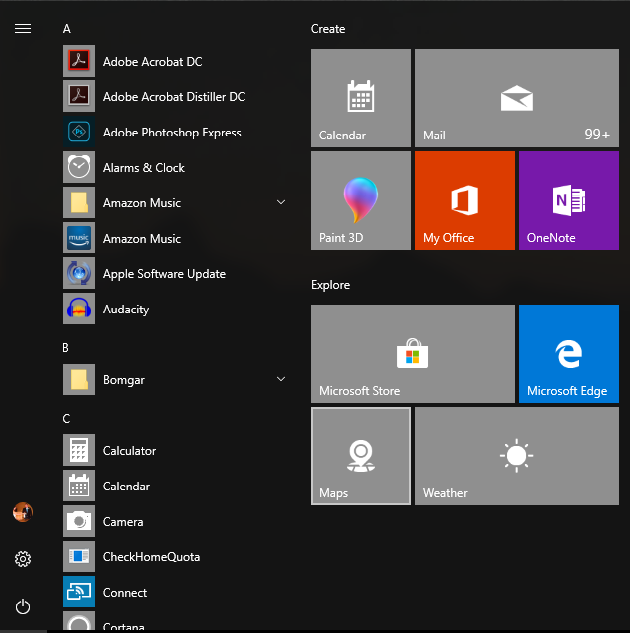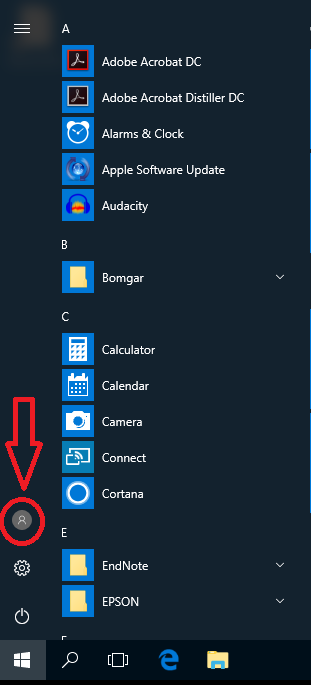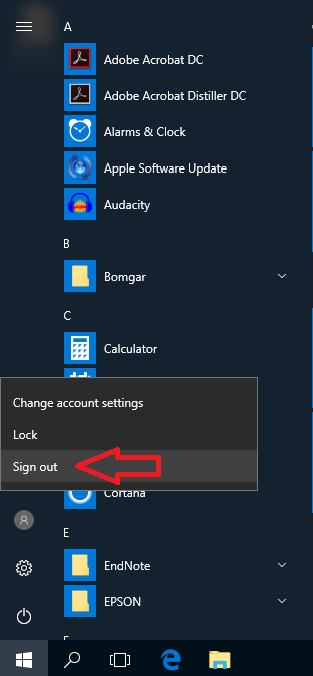Windows 10 Transition Resources
Mark Mackey
Tylor Cardone
Daniel LaGrow
Admin JBB (Deactivated)
What does the transition mean for me?
To ensure that university-owned computers are secure and receive the latest patches, ITS will transition all computers running Windows 7 to Windows 10. As per Microsoft: “After January 14, 2020, Microsoft will no longer provide security updates or support for PCs running Windows 7.” - https://www.microsoft.com/en-us/windowsforbusiness/end-of-windows-7-support
Yes. After January 14, 2020, any remaining PCs not upgraded to Windows 10 will be disconnected from the network to reduce the potential for the installation of malware that takes advantage of a non-secure operating system.
In 2019, ITS will be deploying Windows 10 to university-owned computers. During the Fall and Spring semesters, ITS will be concentrating on computers in academic faculty offices. Then, during the summer break and other break periods, ITS will be concentrating on deploying Windows 10 to staff and computer labs and smart classrooms.
No. You will need to complete the new Computer Administrative Privileges Request Form.
NOTE: You will NOT be required to complete the training course again as part of the Windows 10 campus-wide deployment if you already had admin access with your Windows 7 computer. The new Computer Administrative Privileges Request Form expires two years from the date of approval. For more information, please review the Computer Administrative Privileges FAQ and Request Process.
Most home computers have “retail” versions of Windows 10 installed, typically either “Home” or “Pro”. Here at SUNY Fredonia we are using “Windows 10 Education” version. As to be expected, there are variations between versions. There are additional modifications to improve ease of use in some cases and to improve security in other cases.
One item that is primarily related to ease of use is the initial absence of the many pre-installed “Metro” style shortcuts when you open the start menu. Those have been removed by default, but you are able to add any that you would like there by merely right-clicking on the start menu item and clicking “Pin to Start”. Additionally, two frequently used items that are now buried in the start menu (Internet Explorer and File Explorer) have been pinned to the taskbar for easy accessibility.
As a security consideration, certain features that regularly send data to Microsoft or require frequent updating have been disabled. This includes Cortana voice command, Microsoft Ink, as well as Microsoft Edge. Microsoft Drive has also been disabled as we are not set up with corporate access and any access would be with your own separate Microsoft accounts which would not be an approved secure storage option. Microsoft Store is disabled as there are no Store apps that are on the approved software list other than the ones already installed.
An additional feature that is enabled (and is recommended for enabling on your home computer) is a screensaver timeout which requires your password to get back in to the system. Depending on the security classification of the system this would be either 3 hours of inactivity or 30 minutes of inactivity.
One feature that you may or may not have enabled on your home computer is Windows Firewall. This closes many of the network “holes” that malware can use to get into your computer. It is enabled on University Windows 10 computers and we highly recommend that you ensure that it is enable on your home computer for your own protection.
A security feature that eliminates the vast majority of malware is enabled on the University Windows 10 computers but is not available on your home computer is AppLocker. We have a “Whitelist” of locations that programs and applications are allowed to execute from. These are typically locations that a normal “user” cannot write to and therefore Malware cannot write to and thus run from. The Whitelist covers all the approved software, but if you encounter something that it blocks that you need to run, please contact the ITS Service Center and we will either adjust the way it is installed or if needed, add it to the whitelist (if it is approved software).
Lastly, both as a security measure as well as a way to ensure you can keep track of your files, you cannot create new folders on the root of the C: drive the only place you can save files on the C: drive is within your user profile (this includes Documents, Desktop, Download, Music, Picture, and Video folders). See the Answers documents “Where can I save files on my Windows 10 Desktop?” or “Where can I save Files on my Windows 10 Laptop?” for more detail.
There are some other very minor differences such as how updates are handled and such, but those should not be particularly noticeable.
| Category Level | Time Until Screensaver | USB Read/Write Ability |
|---|---|---|
| Category 1 | 3 hours | Read and Write Capable |
| Category 2 | 1 hour | Read and Write Capable |
| Category 3 | 30 minute | Read Only |
There truly aren't many differences between Windows 7 and Windows 10. Please see the breakdown below for the main differences. There is also a Windows 10 virtual tour below if you would rather see some of the Windows 10 features in video format.
Start Menu
You now have the option to add shortcuts to the start menu. You can activate live tiles here and resize them to show more information.

Settings Application
There is now an application that has been designed to be more user friendly than the original control panel.
Windows 10 Virtual Tour - Lynda.com Link
While your office computer is being upgraded, computer labs will be available for your use. These include computers in McEwen G22, Reed Library, Thompson W203, and Thompson W207. If you require a laptop loaner, please contact the ITS Service Center at ITS.ServiceCenter@fredonia.edu or by calling (716) 673-3407.
See the Technology Request Process (TRP) for more information.
No. When a computer is replaced due to age, the old computer’s hard drive will be retained by ITS for 30 days. After that time, the computer’s hard drive will be securely erased and the computer will be prepared to be recycled by an electronics recycler.
How do I use Windows 10?
In order to log off of a Windows 10 computer, please click the start menu icon in the bottom left corner and select the small picture above the settings gear icon.

After that, select "Sign out".

Unfortunately, on a Windows PC (not laptops), you won't be able to quickly search for files on the machine. This is due to the fact that we redirect your desktop and documents folder to the U: Drive.
In order to search on Windows 10, please open up file explorer and use the search function in the top right. The best way to open file explorer is to hold the Windows key on the keyboard and hit "E".
See the Computer Administrative Privileges FAQ and Request Process for information.
After completing the Computer Administrative Privileges Request Process, please follow the below process to use admin access on your Windows 10 computer.
Login into your University authorized access computer.
When you attempt to access an application or service on your computer that requires administrative access, you will be prompted to enter your eServices User ID and Password.
With the migration of the U: drives to the new servers, SFTP access to U: drives will no longer be available.
For Faculty/Staff that need off campus access to their U: drives, they can use VPN (Virtual Private Network) to Remote Desktop into their campus computer or to TS1.ad.fredonia.edu. For more details on setting up VPN access, please refer to: Getting started with the Fredonia Virtual Private Network (VPN) Services
There is no option for students to access their U: drives from off campus. For students that need access to their files when off campus, it is recommended that they save their files to their Google Drive which they can access from off campus. For more information on using Google Drive, please refer to: How do I use Google Drive?
Training resources on Windows 10 are available on Lynda.com, Microsoft’s website, and in-person training sessions will be provided by ITS. More information on training sessions provided by ITS will be sent to the Faculty/Staff Listserv.
As of January 28, all U: drives will have been migrated to new servers. As part of the migration, U: drives will be mapped using a Distributed File System. What this means is that the new mapped location for the drives will be \\ad\fshome\username. This will automatically redirect the connection to whichever server is actually hosting the share. The primary benefit of this method is it allows the shares to be located on multiple servers (providing greater capability to expand storage sizes as needed) as well as allowing for the replacement of servers as needed without changing the drive mapping of the U: drive.
The new servers are now all encrypted to provide greater security for your data. Additionally, the “Previous Versions” tab on the properties option of files and folders is still enabled, allowing you to recover previous versions of files in the case of accidental change or deletion.
What will you see when the change happens?
Once the migration is complete, your original mapping will continue to work (if you are logged in at the time of the change) with file changes and new files being continuously replicated to the new servers. Once you log off and then log back in, you will see the U: drive is mapped to “UserName (\\AD\FSFiles) (U:)” instead of “UserName$ (\\FSFiles) (U:)”
Important: If in the off chance you have links (such as in spreadsheets) or shortcuts using the UNC “\\fsfiles\UserName$” instead of just “U:” Those links and/or shortcuts will need to be updated.
FredApps is folder that is provisioned out to authorized Fredonia employee computers that have a specified need to save files from their local C:\ Drive on their University computer. This service is typically reserved for employees that are developers (e.g. Information Technology staff, etc.).
Process to request access to FredApps:
Submit a Tracker ticket requesting access to FredApps. Please be sure to specify the particular computer name (e.g. AA-BDH-D-01), and application or task that you are using that requires the FredApps access.
The Tracker ticket will be reviewed by the Information Security Officer (ISO) or designee and either approve or deny the access.
If approved, the ISO or designee will provision out the access and notify the requestor via the Tracker ticket to reboot their computer to access the C:\FredApps directory.
Please contact the Information Security Office (ISO) (716) 673-4725 or submit a tracker ticket by emailing security@fredonia.edu for assistance.
Where can I save my files?
See the SUNY Fredonia Data Storage Services for more information.
With the rollout of Windows 10 on desktop workstations, “Folder Redirection” will be enabled for your “Desktop”, “Documents”, “Favorites”, and Chrome Profile folders. What that means is that anything saved to those locations will automatically be redirected to your U: drive, thus ensuring secure and backed-up university data. Additionally, you are free to create additional folders on your U: drive to save to for organization purposes. If you have access to FredShare shared folders, you can also save university data there.
“Downloads”, “Music”, “Pictures”, and “Videos” folders are NOT redirected to your U: drive and as such are not backed-up. These folders are set aside for non-University related data and will not be saved in the event that your computer needs to be re-imaged. If you have any documents that normally would go into those locations that is University data, please ensure that it is saved or moved to your “Documents folder”.
It is important to note that these folders (typically listed under “Libraries”) are the only place you can save data on the C: drive. For data that is classified Security Category I or II, there are also options for external storage such as USB, Google Drive, and a few others.
For more detail on what can be stored externally, please see the Answers document: SUNY Fredonia Data Storage Services
With the rollout of Windows 10 on laptops, “Folder Redirection” will NOT be enabled for your “Desktop”, “Documents”, “Favorites”, and Chrome Profile folders. What that means is that anything saved to those locations will saved to your C: drive which is less secure than your U: drive and is not backed up. University data saved to these locations should only be temporary as needed for access when you are not connected to the wired campus network. Likewise, when you are connected to the wired campus network, be sure to copy (or move if they are not needed on the laptop anymore) any updated files to your U: drive where they are more secure and are kept backed-up. (Files only saved to your laptop drive can be lost if the drive crashes or the laptop is stolen).
It is important to note that the folders in the user profile (typically listed under “Libraries”) are the only place you can save data on the C: drive. For data that is classified Security Category I or II, there are also options for external storage such as USB, Google Drive, and a few others.
For more detail on what can be stored externally, please see the Answers document: SUNY Fredonia Data Storage Services
Related articles
Filter by label
There are no items with the selected labels at this time.